You can trek to a boiling lake in the Caribbean – and it’s intense
Beware: Dominica can kick your ass, says Laura Chubb
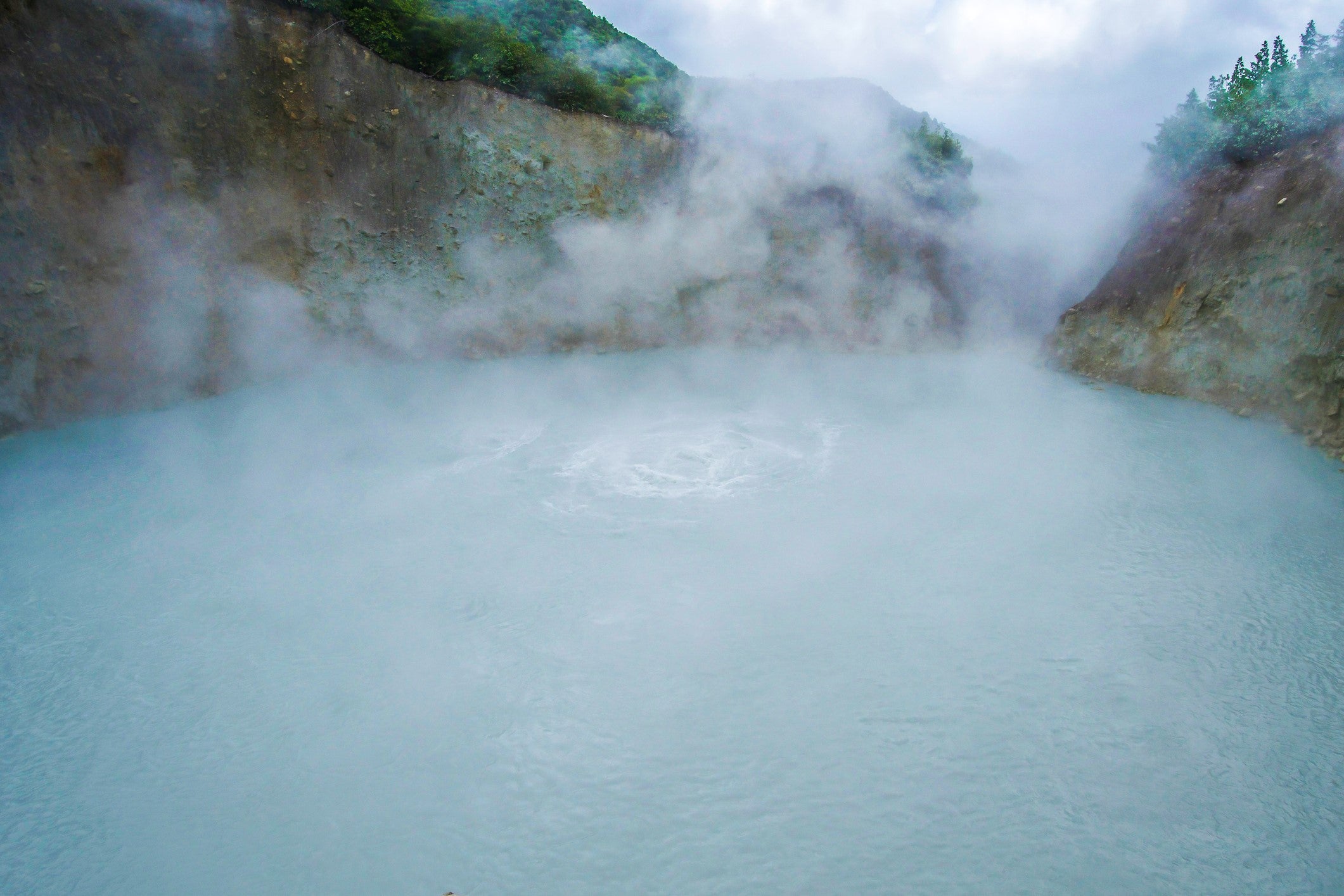
The Independent’s hotel recommendations are unbiased, independent advice you can trust. On some occasions, we earn revenue if you click the links and book, but we never allow this to affect our coverage.
Most Caribbean islands coddle visitors with bleached-white beaches and textbook luxury. Dominica – a tiny, primal island often confused with the Dominican Republic, a good 1,000km away – is different. Dominica can kick your ass.
The “big ticket” attraction? Nope not a swish resort, or a crystal-clear bay. It’s a punishing ascent of more than a thousand metres through thick rainforest, followed by a spot of scrambling across the volcanically active – and formidably monikered – Valley of Desolation, all in order to reach the island’s scorching natural curiosity, the Boiling Lake.
The “lake”, as everyone has it, is in fact a flooded fumarole: a fierce crack in the Earth’s crust that occurs in or near volcanoes, and belches hot fury fresh from our planet’s core. It is not – really not – an inviting, bath-like hot spring. The lake bubbles and seethes, heated by molten lava underneath. The cooler edges average at about 90C. Not quite right for a swim, it is only to be goggled at from a safe distance. “Safe” being a loose term: the lake is as volatile as the planet’s whim.
Back in 1880, it disappeared in favour of a spitting fountain of hot water and steam. In November 2016, it stopped bubbling all together. Photos of tourists swimming in the newly placid lake surfaced on Facebook. Magnificently idiotic, given that, days later, the lake was and is back to its old self: a vicious, blistering pool.
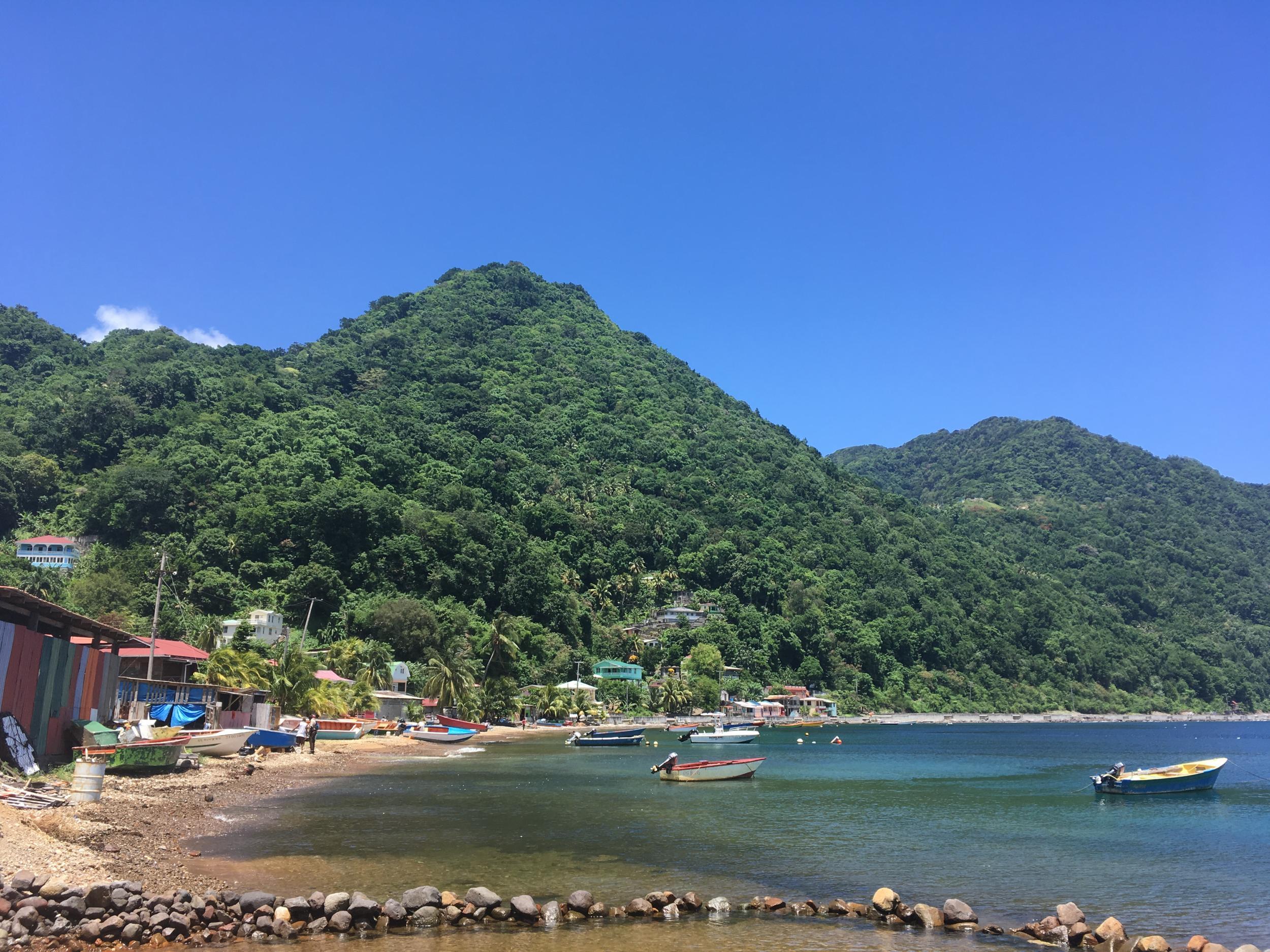
Of course, as soon as I heard you could hike to a boiling lake in the Caribbean, I had to do it. Never mind not one local I met once I’d arrived – save for the guides who chaperone daft tourists like me – said they’d done it. The guy checking me in to my hotel opened with: “You’re not doing the boiling-lake hike, are you?” Hurriedly repealed with a, “Oh, well, it’s not that bad”. The Dominican tourist board lists the boiling lake trail under “very difficult hikes”, the category after “advanced hikes”, and, as if that weren’t clear enough, lectures it is “only for the experienced hiker”. Well, I trekked the Inca Trail, um, 11 years ago. So I figured I’d be fine. Right?
At this juncture, it’s worth pointing out that not-particularly-fit hikers like me are, at the very least, helpful to Dominica right now, if not ourselves.
In September 2017, Hurricane Maria hit this small island of 72,000 people with such force, 90 per cent of the buildings lost their roof. Landslides destroyed roads and bridges, power lines tumbled. Pretty much everything lay in tatters. The devastation felt especially cruel because Dominica, which has long struggled to make enough tourist dollars owing to a lack of powder-soft, golden beaches, had finally been building a rep for itself as an all-natural adventure destination. It even had a luxury boutique resort, Secret Bay, making it onto “world’s best” lists.
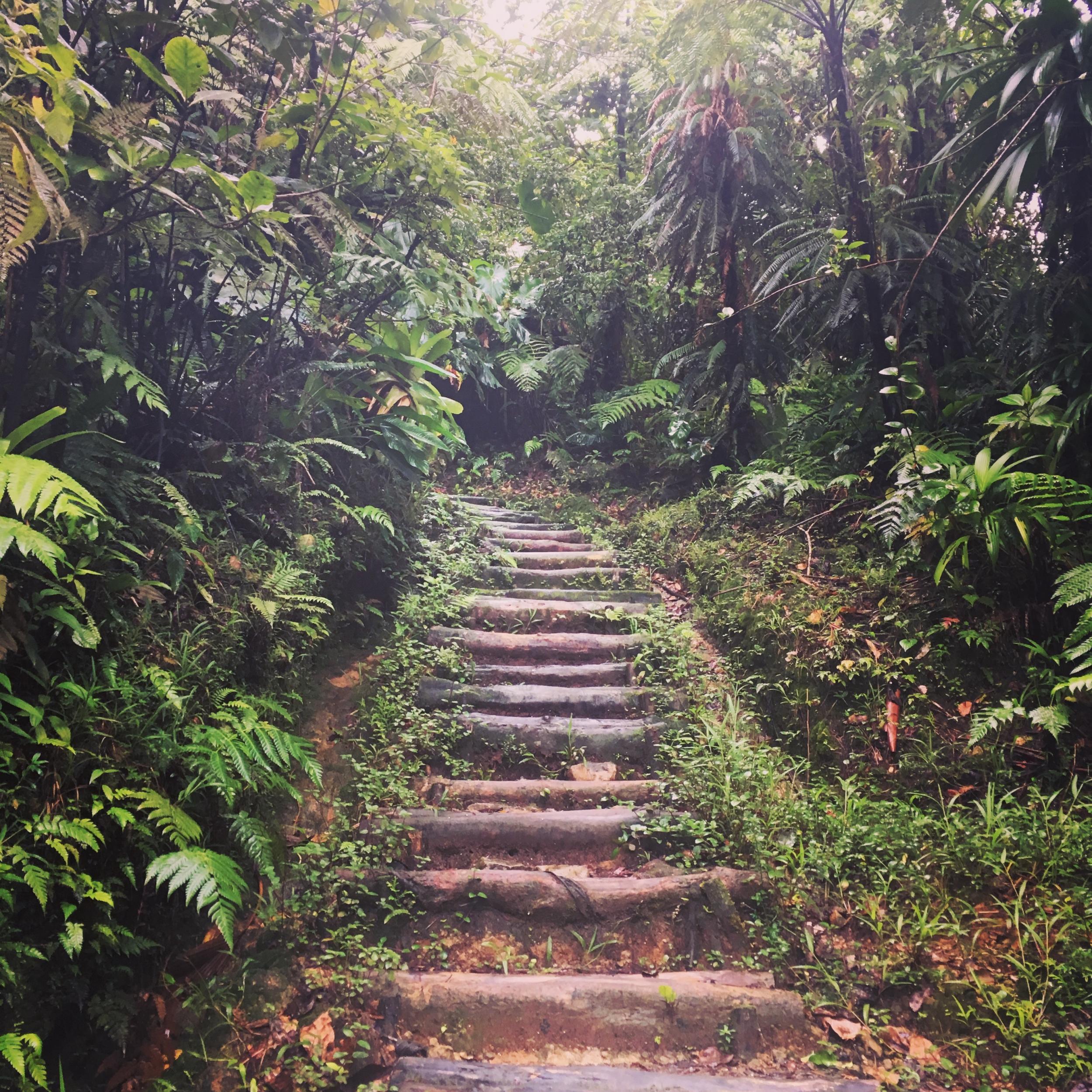
Then, in the blink of a hurricane eye, Dominica was unvisitable.
It’s taken a long time to get Dominica back in working order. But, today, it’s on its way to bouncing back stronger than ever. The island even just welcomed its first-ever big-name hotel brand, Kempinski, which opened the beachfront Cabrits Resort & Spa – a good shout for soothing post-trek muscles.
The bottom line, though: if Dominica is going to get its phoenix-from-the-ashes moment, it needs more visitors.
The day of reckoning
It’s 6.30am when my guide, a wiry man by the name of Michael Eugene, pulls up in his 4x4 to collect me. He’s pleased my boots and waterproofs are caked in mud, as this suggests experience. Clearly Dominica is not short of silly people blundering boiling-lake-wards in brand-new trainers, their footwear as unseasoned as their own hiking history. I don’t tell Michael I got muddy via a spot of gentle birdwatching the previous day.
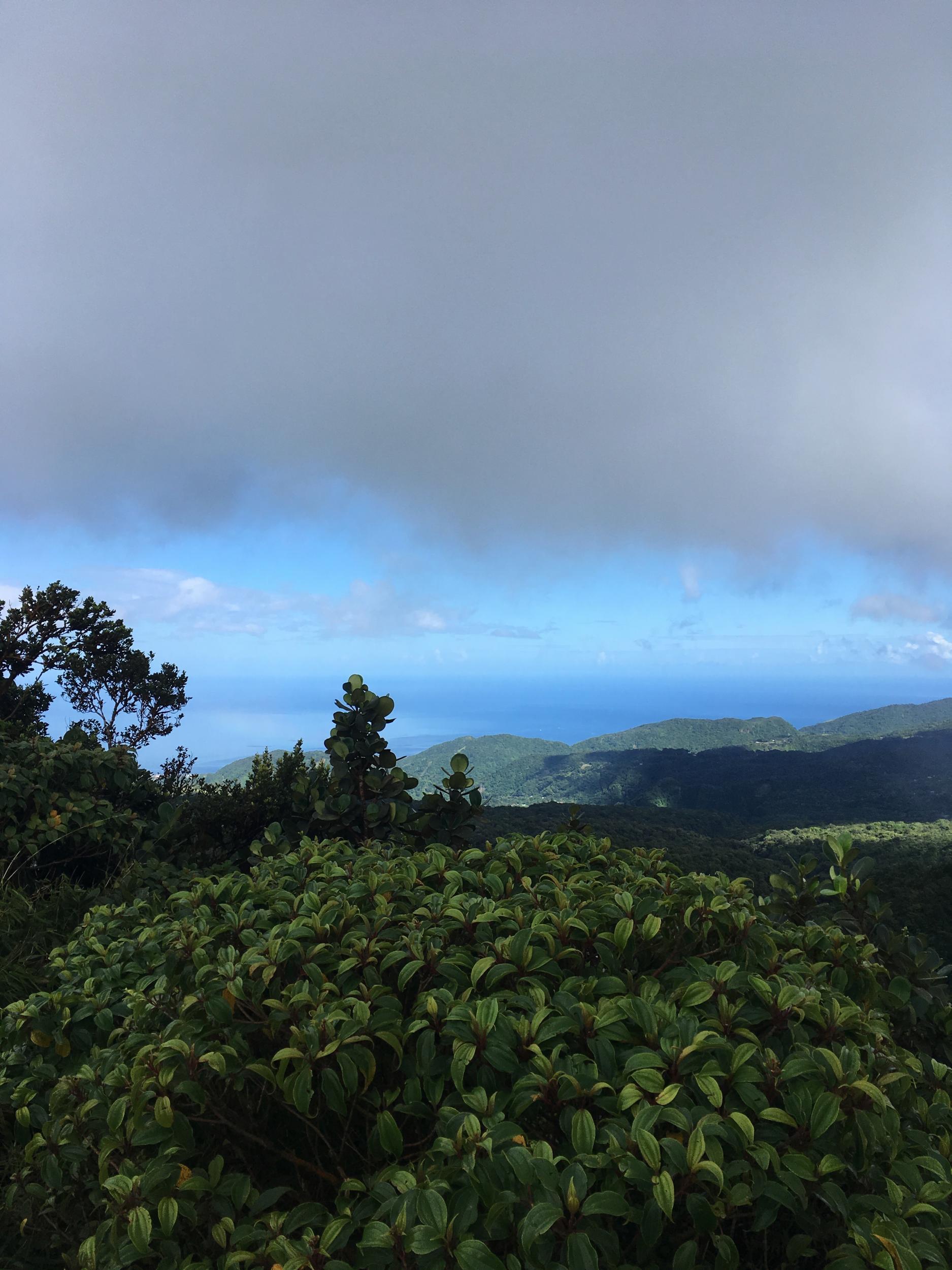
Now, it seems to me that ever since I hit the tarmac at Douglas-Charles Airport, people have been going out of their way to scare me about this damn hike. There was the hotel guy. There is the tourist board’s website. There is Wikipedia. And there is whoever wrote that boa constrictors are “common” in Morne Trois Pitons National Park – in which the boiling lake sits – and grow up to 10ft. I have gone from looking forward to an exciting yomp to a natural wonder, to fretting about plunging off the side of a mountain, scalded by a geyser, while being throttled by a gigantic reptile. It doesn’t help much when Michael insists on saying a prayer before we hit the trail, and asks the higher power to “bless our families.” What the hell have I let myself in for?
The first hour of hiking is more reassuring. We climb tree-trunk-hewn steps up through rainforest, the musical whistles of tropical birds ringing among a thousand shades of green. This is the wild interior of Dominica, an island that has resisted development through sheer force of geography: its mountainous terrain is impossible to tame, and helped indigenous people defend it for centuries (Dominica was the last Caribbean nation to be colonised). It’s got nine active volcanoes. Little wonder Dominica is about as pure a Caribbean island as you can get: home to the region’s first long-distance walking trail (a 115-mile toenail-peeler through pristine forest reserves and farmland) and rainforest wellness retreats, rather than monster all-inclusives.
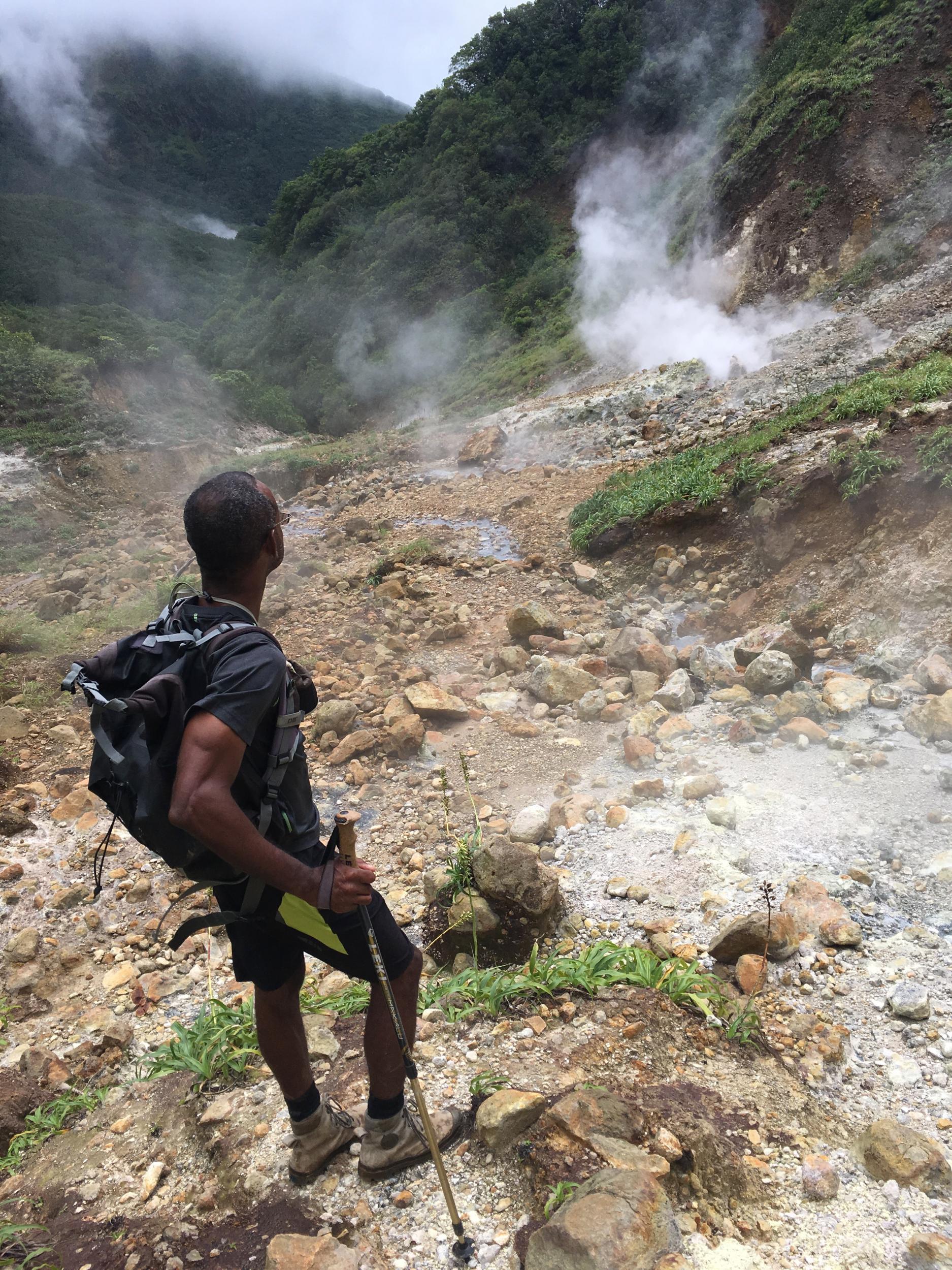
We reach our first marker – Breakfast River, so called because this is where you traditionally stop for a bite. The smart hiker starts early; a sign at the trailhead insists you don’t set off any later than 10am. (You really don’t want to be returning in the dark.) The next hour is a slog up Morne Nicholls, a 3,168-ft mountain; at times the trail teeters on a ridge with sheer drops each side. Michael registers my huffing and puffing and, no doubt pondering my claim to be an experienced hiker, asks: “You have been a little bit lazy lately?”
No, dude, I’m climbing a staircase up a mountain.
There’s brief respite at the top. A clearing gives a 360-degree view, part moody green peaks shrouded in cloud and mist; part blue skies and sun-dappled hills and sprawling sea blending with the horizon. I can’t see a single sign of civilisation. The rotten smell of sulphur rises from the valley below.

Next is a steep descent with plenty more opportunity to slip off the trail and break bones. But this is where it starts getting really interesting: heavy green gives way to a barren scene of rust-red clay and cakey, silver-blue soil. The deeper we go, the more the fuming ground, steaming all over, becomes streaked with the sickly yellow of pure sulphur. We pass a bubbling stream; Michael instructs me to dip in my hand. It’s slightly hotter than you’d want a bath. We push on, and the stream turns an evil grey-black. The angry earth smoulders. I think about how, in an environment so primordial, any sense of being in control vanishes. I haven’t a clue where the marked trail is now, and am thankful it’s not my job to know.
The final push entails a pretty hairy climb across slippery rocks and jumping stone-to-stone in a gushing, hot river. Recent heavy rain has obliterated parts of the trail, and at times I’m trying my hand at literal rock climbing. Which makes it particularly bemusing when we bump into a wild-haired French guy making his way back, only a pair of shorts and track shoes to his name. And here I am in my weather-proof gear, backpack loaded with water, repellent, snacks and sunscreen. “That is what we call a mountain goat,” Michael says. Though Dominica sees its fair share of unprepared hikers, it also receives hardcore trail runners and iron-man-like athletes.
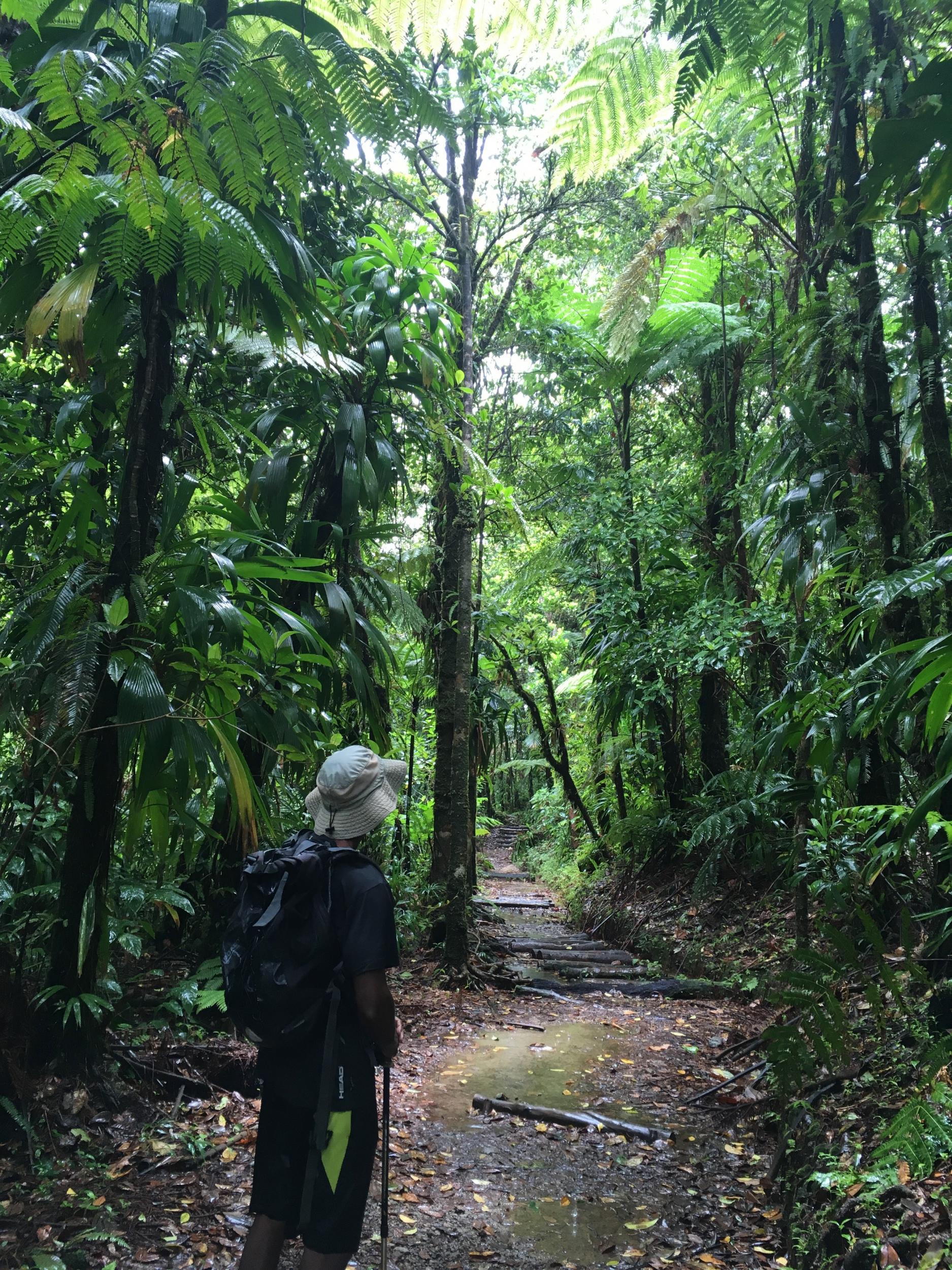
And then, suddenly, we’ve arrived. A screen of steam obscures the view before thinning out to reveal boiling, blue-grey water in a natural basin below. At 200ft by 250ft, this is the world’s second-largest boiling lake: the first is Frying Pan Lake, on New Zealand’s North Island, which fills a volcanic crater and is less agitated at about 55C. (It’s accessed by a much gentler, wheelchair-friendly trail.) Though this is what I came to see, I don’t feel inclined to stick around. The wet conditions and visions of landslides hold me way back from the edge. I’ve just enough time to eat a sandwich before the sulky sky starts hurling rain.
It’s another three hours back along the way we came, the treacherous parts even trickier now we’re getting soaked. Sweat and sunscreen and rainwater slither down my forehead and into my eyes. In the last hour, the weather eases and the sound of splashing puddles marks our wet descent. At Breakfast River, we meet a young couple on the inbound journey: the girl looks doubtful, but the guy is gung-ho. It’s way too late in the day. I’m worried for them, but minutes later they’re behind us, having turned back. “There’s only so many freaked-out faces you can ignore along the way,” she says, while he skulks. Once they’re out of earshot, Michael whispers: “So he is the muscle and she is the brain.”
Next day, my calves, knees and thighs concede that Dominica has indeed kicked my butt. Still, whether it’s the sensation of muscles burning, or a creeping disquiet about my own mortality, I’ve sure as hell felt alive these past few days. People might typically go to the Caribbean to switch off, but this place will wake you up.
Travel essentials
Getting there
There are no direct flights from the UK to Dominica. Typically you would first fly to Barbados, then catch a two-hour flight with local airline LIAT (liat.com) from Bridgetown to Douglas-Charles.
Staying there
Close to the airport, Pagua Bay House offers private cabanas with sea views in a convenient location. From US$210 (£160) per night.
Hiking there
Michael Eugene offers the boiling lake trek with his tour company, Jungle Trekking Adventures & Safaris, at US$100 per person for two people, or US$75 per person for three people. Fee includes transportation and site passes to access the trail. Other adventures on offer include an outdoor Caribbean cooking and rum experience from US$75 per person.
Join our commenting forum
Join thought-provoking conversations, follow other Independent readers and see their replies
0Comments